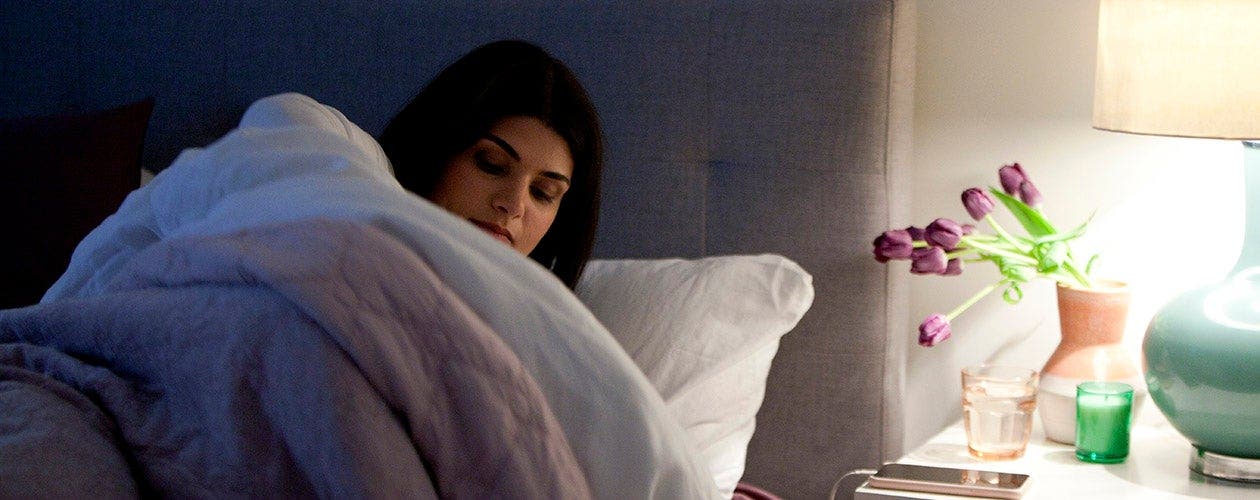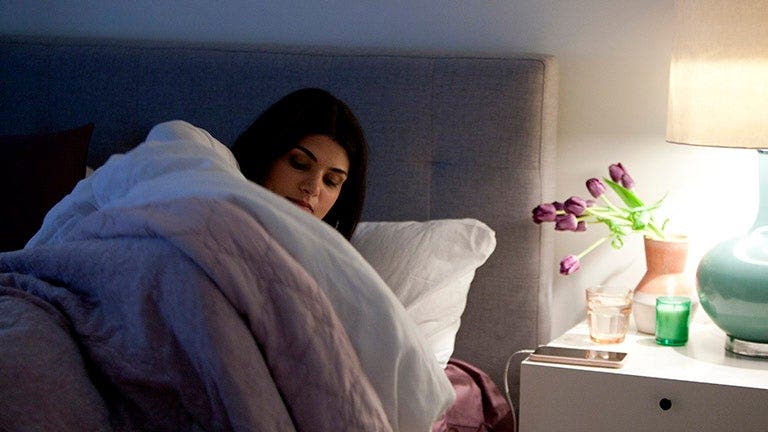5 tips for a sleep-friendly bedroom


Getting poor sleep doesn’t only make you nod off at your morning meeting.
A research review looking at the impact of sleep on obesity found there is growing evidence to suggest that not getting enough shut-eye can affect your physical activity level, the hormones your body secretes and the foods you crave—all of which could lead to weight gain.
But better sleep is attainable—and a proper sleeping environment can help. Here’s how to design the perfect sleep environment.
1. Keep it tidy
Your bedroom should feel like a sanctuary for sleep, and that’s hard to accomplish if your laundry is thrown on the floor and your bed is a mess, says W. Chris Winter, MD, author of The Sleep Solution: Why Your Sleep is Broken and How to Fix It.
Rather than continuing to play out the events of the night before - or nights, depending on how long the clutter has been building up - Winter suggests keeping your bedroom tidy and orderly. That way, you can sink into bed and focus on sleep, instead of any distractions in your immediate surroundings. Tidy room, tidy mind.
In fact, a survey by the National Sleep Foundation found that people who said they made their bed every day were 19 percent more likely to sleep well at night than those who went about their day leaving their bedding in disarray.
2. Pick the right sheets
Making your bed is just half the battle. The sheets you sleep in can make or break your sleep, says Winter. Opt for moisture-wicking fabrics that will help you stay cool and keep your skin from feeling clammy at night. If you’re having to layer up or rip off your clothes in the middle of the night, try tinkering with your blankets and sheets.
“You want to create a situation where you are relatively unclothed but you’re controlling your temperature based upon sheets and blankets in your bed. If you’re cold when you go to bed, putting on sweatshirts is not a great plan for temperature control,” says Winter.
3. Shade your windows
Darkness triggers the release of sleep-inducing hormones, but most of us don’t give our bodies the chance to do that, says Winter.
“When it’s time to go to bed I think it’s really important that our bedrooms be not only dark, but exceptionally dark,” he says.
He suggests investing in blackout blinds—not shutters or flimsy blinds—that keep any light from streaming in. Your room should be so dark that you could pull down the shades in the middle of a sunny day and not see your hand in front of your face.
“If you can’t, use some sort of sleep mask or other device that’s going to allow the light that’s reaching your eyes to be diminished,” says Winter.
4. Have a zen nightstand
As tempting as it may be, your bedside table is not the place to keep your smartphone, says Winter. Not only can the temptation to browse and swipe stir up your mind before sleep, but smartphones and other devices emit blue light that may harm your quality of sleep. Instead, keep your nightstand clear of tech and cover the time on your alarm clock, suggests Winter.
“I think knowing what time it is at night is extremely overrated,” he says. “It could create anxiety for some people if they have to get up at 6:30 and they wake up and see it’s 5:30 and think, ‘Oh my gosh I only have an hour to go back to sleep.’”
In place of devices, Winter suggests using the space for some sort of sturdy knickknack that won’t break when you toss it on the ground. If you’re lying in bed being kept awake by something you need to remember in the morning, you can think of that task while you knock the item off the nightstand. You’ll be able to fall asleep knowing that when you see the item on the floor in the morning you’ll remember what you need to take care of. (Winter keeps a wooden rhinoceros on his bedside table for this very reason.)
5. Choose calming paint
There’s a reason spas aren't painted bright pink. Stimulating colors, like red, yellow, and orange tend not to promote the kind of peaceful state you need to sleep well, says Winter. Instead, opt for neutrals or cool colors like gray or blue, which have been found to promote relaxation.
